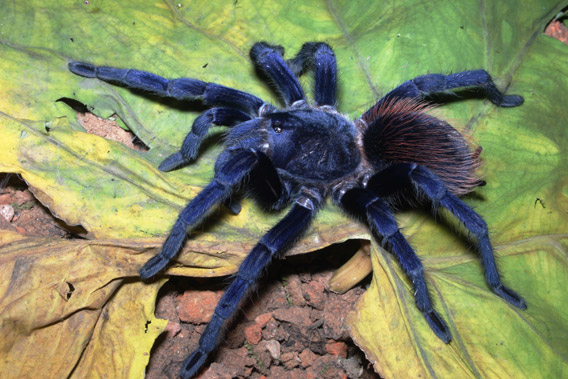
Sazima’s tarantula: one of the top ten new species discovered in 2011 according to the annual list by the International Institute for Species Exploration at Arizona State University. Photo by: Caroline S. Fukushima.
A sneezing monkey, a blue tarantula, and an extinct walking cactus are just three of the remarkable new species listed in the annual Top Ten New Species put together by the International Institute for Species Exploration at Arizona State University. This year’s list includes a wide-variety of life forms from fungi to flower and invertebrate to primate.
“The top 10 is intended to bring attention to the biodiversity crisis and the unsung species explorers and museums who continue a 250-year tradition of discovering and describing the millions of kinds of plants, animals and microbes with whom we share this planet,” explains Quentin Wheeler, an entomologist who directs the International Institute for Species Exploration.
The list is released every year on May 23rd to commemorate Carolus Linnaeus, the father of taxonomy.
Top Ten New Species of 2011 in Photos and Video

This mysterious primate (seen here in a reconstruction) not only made headlines last year, but continues to do so as a population of the believed to be Critically Endangered species was recently found in China. The new monkey, the Myanmar snub-nosed monkey (Rhinopithecus strykeri), was discovered byway of a carcass killed by a local hunter. Since then camera trap photos and video have been taken of the species. They are reportedly easy to hunt as locals say their up-turned noses cause them to sneeze in the rain. Researchers believe only a few hundred survive. Photo reconstruction credit: Thomas Geissmann/Fauna & Flora International. (See video at the end of the article.)
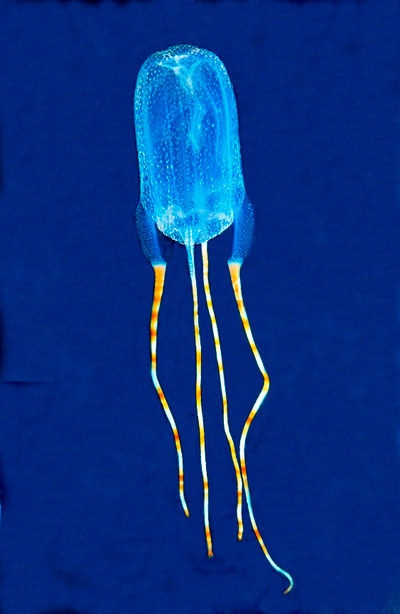
This new jellyfish was named by high school teacher Lisa Peck for what she believed divers must say when they first see the beautiful animal: ‘Oh Boy’, hence: Tamoya ohboya. It is also called the Bonaire banded box jelly because it was spotted near the island of Bonaire in the Caribbean. The new jellyfish is venomous. Photo by: Ned Deloach. (See video at the end of the article.)

Hell has a new member: Halicephalobus mephisto. This super tiny (0.5 millimeter) nematode was discovered nearly a mile (1.3 kilometers) beneath the Earth’s surface in a South African gold mine. Named after Mephistopheles, the demon character in Faust, the species has adapted to incredible underground pressures and had not had contact with the atmosphere for up to 6,000 years. This is a photo of the face of the nematode taken under scanning electron microscope. Photo by: A. G. Borgonie, Ghent University, Belgium.
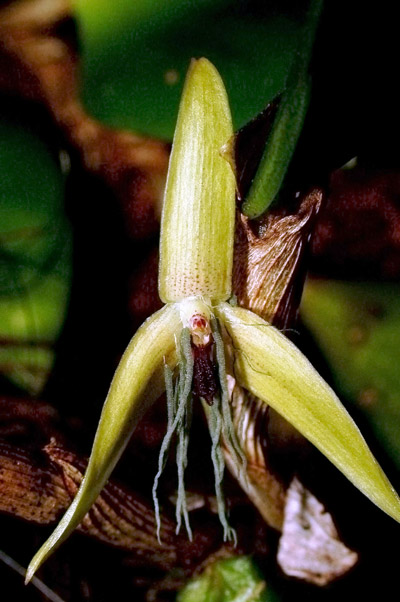
This is the world’s only known night-blooming orchid. Discovered in Papua New Guinea, this orchid open from 10 PM to early morning. It is named Bulbophyllum nocturnum, which means “at night”. Photo by: Jaap Vermeulen.
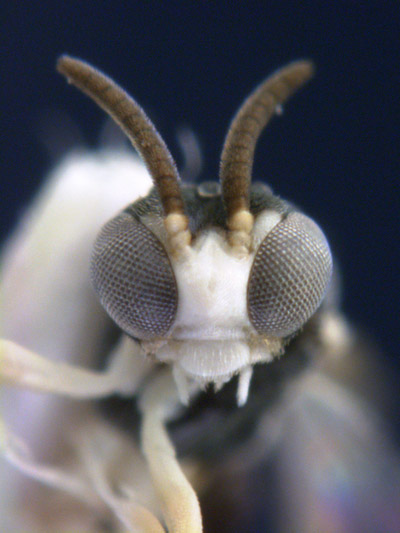
This tiny wasp dive bombs ants from above, laying its eggs on the unsuspecting ants in less than 1/20 of a second even though the ants are giants to it. Named, Kollasmosoma sentum, it was discovered in Madrid, Spain. Photo by: C. van Achterberg. (See video at the end of the article.)

Named after the popular kids cartoon character this fungi is called the SpongBob Squarepants mushroom (Spongiforma squarepantsii). Discovered in Malaysian Borneo, this mushroom resembles the sea sponge and when squeezed will spring back to its original form. Photo by: Thomas Bruns.
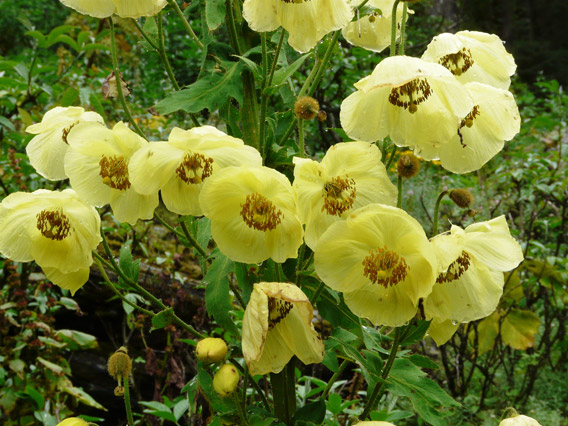
This high-living poppy probably went unnoticed by scientists for so long because it lives above 3,290 meters (10,800 feet) in the wilds of Nepal. It is named Meconopsis autumnalis, because it flowers in the autumn. Photo by: Paul Egan.
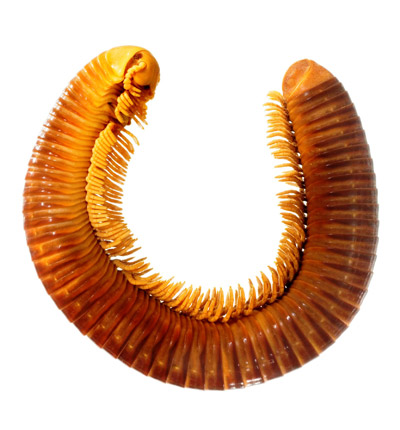
If you want to picture this species in real life: think of a sausage. Named the “wandering leg sausage” (Crurifarcimen vagans), this is now the world’s largest millipede. Discovered in the species-rich Eastern Arc Mountains of Tanzania the new millipede is 16 centimeters (over six inches) long. Photo by: G. Brovad.
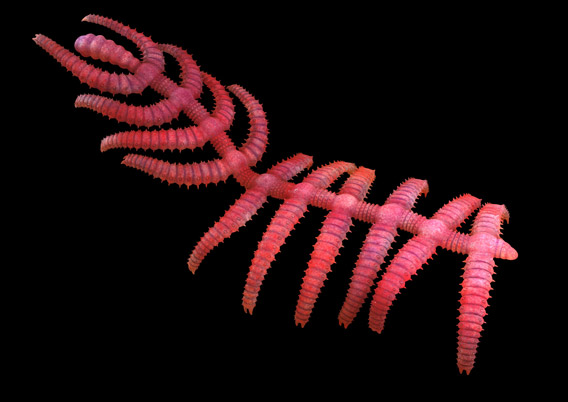
Belonging to an extinct group of little-known animals called the Lobopodia, this fossil species was given the name walking cactus (Diania cactiformis) for its resemblance to imagined trotting cacti. Discovered in China, the species was alive during the Cambrian, an incredible 520 million years ago. Reconstruction by: Jianni Li.
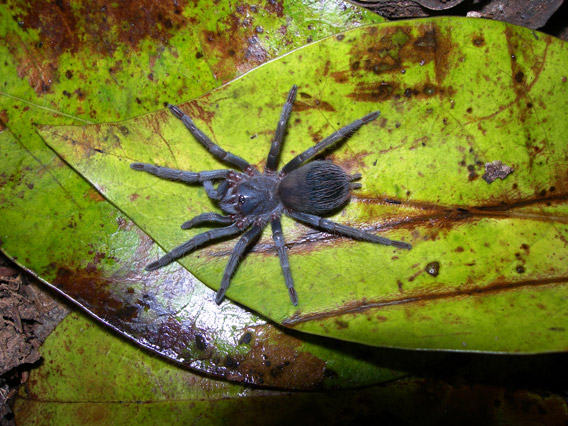
Amazingly this is the first new species from Brazil to make this list. Sazima’s tarantula (Pterinopelma sazimai), which is stunningly blue, is found on a single flattop mountain in the mega-biodiverse country. Photo by: Caroline S. Fukushima.
Related articles